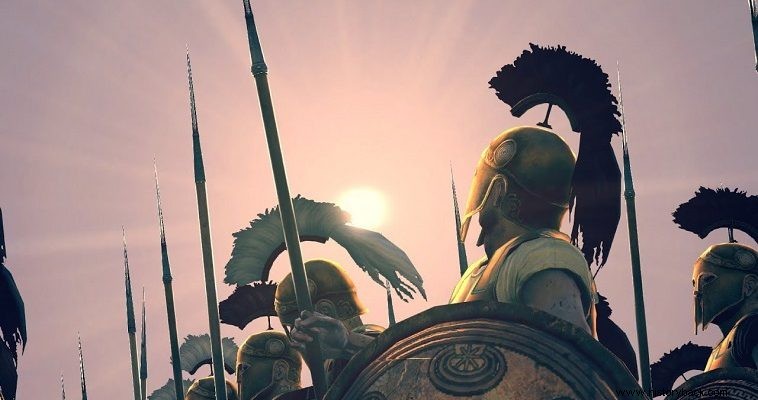
In the midsummer of 415 BC. 136 warships and many transports carrying 2,100 Athenian hoplites, 500 Argive hoplites, 250 Arcadian hoplites and another 2,150 allied, vassal or mercenary hoplites, 480 light archers and javelinmen, 700 Rhodian slingers, 120 Megarians and 30 horsemen set out for Sicily with the aim the capture of Syracuse, as the adventurer Alcibiades had proposed and the thoughtless Athenian Council had accepted.
After adventures the Athenian forces reached Syracuse. The first battle of the war took place outside the city. The Syracusans and their allies had camped near the sanctuary of Olympian Zeus, southwest of the city. With them were the Selinundians, as well as 220 horsemen and 50 spearmen from Gela and Kamarina.
Opponents line up
Although the number of men in the Sicilian army is not known, it is believed to have outnumbered the Athenian. This conclusion is drawn from the writings of Thucydides, according to which the Syracusans and their hoplite allies formed a phalanx 16 cubits deep.
On the contrary, the Athenians and their hoplites lined up 8 fathoms deep, perhaps to be able to cover the entire length of the enemy front, so that they would not be in danger of being outflanked by the enemy cavalry, which was estimated to number over 1200 men.
The Athenians and their infantry allies were clearly more experienced and better trained than their opponents. Perhaps this was also the reason why the Syracusan generals ordered their men in a deep formation, so that they would have more courage and it would not be easy to break up their formation.
The Athenian army lined up in two lines, with the Argive and Mantinean allies forming the right wing, the Athenians in the center and the remaining allies and mercenaries forming the left wing. The command of the first line was probably taken by general Nikias and of the second line by general Lamachus. Alcibiades had been recalled to Athens because of the infamous case of cutting off the Hermes.
The Athenians rush in
The Athenians and their allies moved first against their enemies. The Syracusans also moved against them, but the stragglers ran as if to join the yoke. The result of this was, of course, causing disorder in the yokes at the time of access. The fronts of both armies were covered by divisions of light infantry (psiloi) which engaged each other first. The acrobolisms continued for some time, until the soothsayers completed the prescribed sacrifices and the phalanxes rushed against each other.
It is noteworthy that Thucydides does not mention the action of the Syracusan cavalry, during the acropolis phase. If the cavalry marched against the skirmishers of the Athenian army they would be able to crush them. However, for some unknown reason, this did not happen.
The "Athenian" scroungers, caught up with their rival counterparts and as usually happened in these cases, neither side gained a tactical advantage. At some point the opposing phalanxes came within spearing distance and then pushed.
The opposing phalanxes pushed on for some time and when some of the vanguard fell, they were immediately replaced by the men of the rear yokes. Despite their deeper formation, the Syracusans, did not manage to repel their opponents or cause a rift in their formation.
With the help of heaven
This weakness of theirs probably had to do with their inexperience and not with a lack of courage, as Thucydides typically comments. While the battle was going on and the clang of weapons echoed everywhere in the surrounding area, the sky became jealous, it seems, and began to thunder in its turn. After all, it was already winter and it was probably normal for it to rain.
The inexperienced Syracusans, however, considered the thunder and lightning to be a bad omen. Their belief was strengthened by the fact that even if there were more of them, they could not repel the enemy. What the Syracusans did not succeed, however, their opponents succeeded.
First the Argives, the ones on the honorable right end of the line, pushed back the Syracusians opposite. In this way they were forced to retreat and their other divisions to retreat, to avoid the possibility of being encircled.
The battle was decided in favor of the Athenians, who, however, did not pursue the vanquished, whose cavalry was not at all worn out and lurking about. The fact that they were not pursued allowed the Syracusans to regroup.
The losses of both armies were not great. About 60 Syracusans and about 50 Athenians and their allies perished in the battle. The small number of dead is not in keeping with the tenacity with which the battle was fought. However, it is explainable if one considers that the Syracusans did not withstand the push long enough and, after disengagement, were not pursued.
